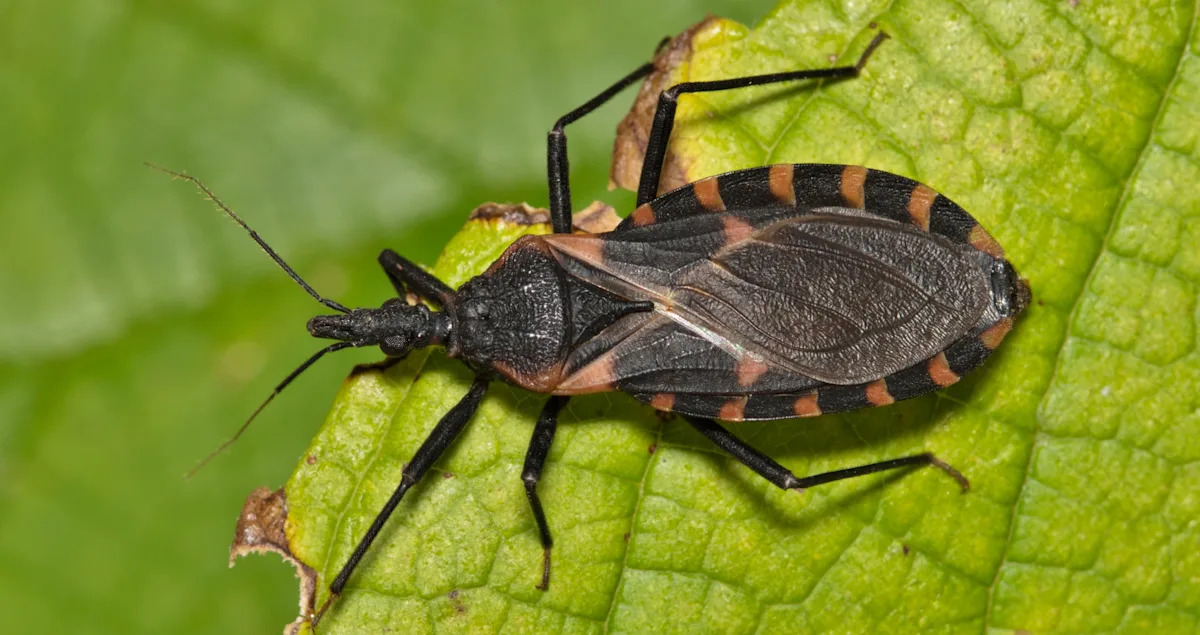A fatal, little -known parasitic infection that is known as Chagas’ disease, once considered a threat abroad, can be endemic in the United States, claim researchers in a new study.
Chagas’ disease is often called a silent murderer because it can go unnoticed for years, even decades, before it causes life -threatening complications. It is caused by a parasite worn by a group of blood -sucking insects that is generally known as the pillow of bugs, because of their tendency to bite people around their mouths.
The disease usually unfolds in two phases, an immediate acute phase and a chronic phase that often occurs much later. During the acute phase, infected people often have no symptoms. If they do that, they are usually mild and non -specific, such as headache, fever and muscle pain. During the chronic phase, which usually takes place 10-30 years after the first infection, the parasites can start serious damage to the heart and the digestive tract. About a third of patients therefore develop significant heart conditions. According to the World Health Organization, another 10% deals with digestion or neurological problems.
It is estimated that more than 7 million people worldwide are infected with Chagas and the disease causes 10,000 deaths every year, says the WHO. Most cases can be found in Central and South America, where the pillow of bugs is common. In 2016, researchers estimate that there were around 300,000 people in the US who had to deal with chronic Chagas -but almost all got the disease in a different country before they came here.
In a paper released this month, a group of experts claims that we must regard the disease as a serious health threat, even for those who never leave the country. They identify eight states (California, Arizona, Texas, Tennessee, Louisiana, Missouri, Mississippi and Arkansas) with confirmed Chagas cases caused by local transfer. This is sufficient reason to consider the disease as endemic – what is always present – in the US, they claim.
“Recognizing the endemicity of Chagas’ disease in the United States is crucial for achieving worldwide health goals,” the authors write in the study.
Most states do not keep track of Chagas, so the actual number of infections in the country is not known, but the researchers say that there are indications to suggest that the disease is much more common than previously thought. The Texas State Health Department catalogized 51 locally transferred cases of Chagas between 2013 and 2023. The State also followed more than 400 cases in dogs during the same wingspan. Infected dogs were found in 22 other states and Washington, DC
Gabriel Hamer, an entomologist at Texas A&M, told De Los Angeles Times that the known cases of Chagas probably “only the tip of the iceberg” represent the actual spread of the disease.
Types of kissing insects that are known to spread chagas are located in 32 states, including each state in the southern half of the US
What you need to know
Fortunately, Chagas can be cured with anti -parasitic medication if it is caught early. However, treatments become less effective the longer someone is infected.
“If we screened it and it would catch it early, most patients could be cure,” Dr. Salvador Hernandez, a cardiologist, at NewsNation. “The problem is that we don’t do that, and people ultimately die or require great expensive care, including organ transplants and surgery.”
As soon as Chagas becomes chronic, it cannot be cured with medication, but according to the Mayo Clinic, the medicines can help to delay the start of the most serious complications. In some cases, infected people may need a pacemaker, heart surgery or even a heart replacement.
TryPanosoma Cruzi, the cause of Chagas’ disease, which is transmitted by triatomid -bugs. (ED Reschke/Getty images)
Identifying chagas in the early stages is crucial. Most symptoms that occur in the acute phase, when they appear at all, are common and easy to attribute to typical viruses such as the flu or cold. They include fever, fatigue, body pain, headache, diarrhea and vomiting. However, there is one known symptom, known as Romaña’s sign – a swelling of the eyelid that sometimes occurs when the parasite enters the body through the eye. Signs of chronic chagas include heart problems and digestive problems.
Dogs are also often asymptomatic in the acute phase, although sometimes they will present swollen lymph nodes, pale gums and stomach problems. During the chronic phase, dogs can show heart problems, lethargy and a swollen belly.
In their research, the researchers claim that categorizing Chagas as an endemic will improve our ability to “tackle this neglected disease that, as shown, has never been tropical”.
